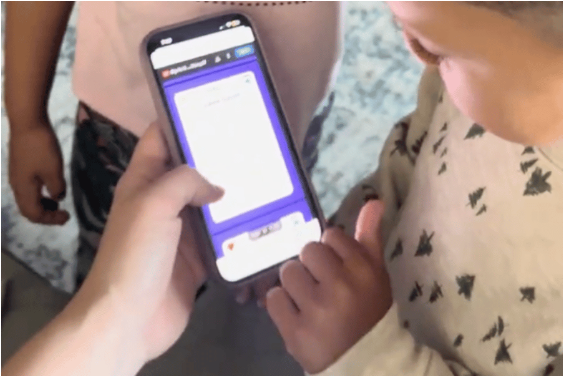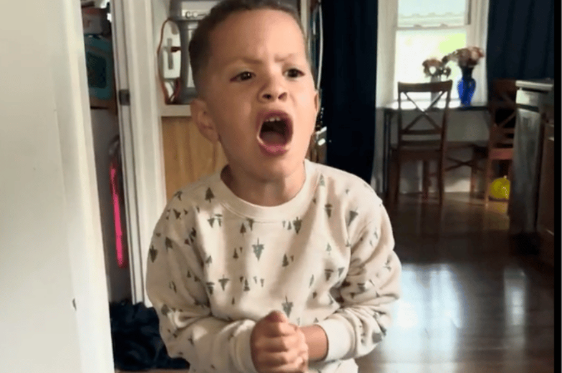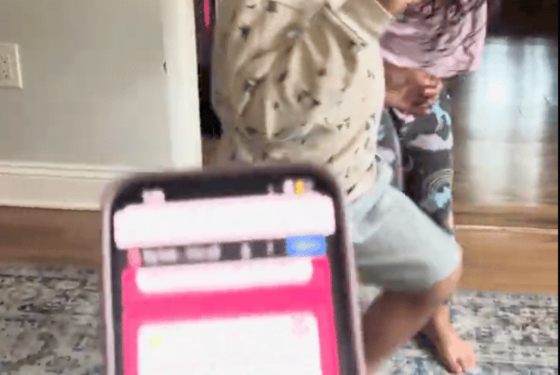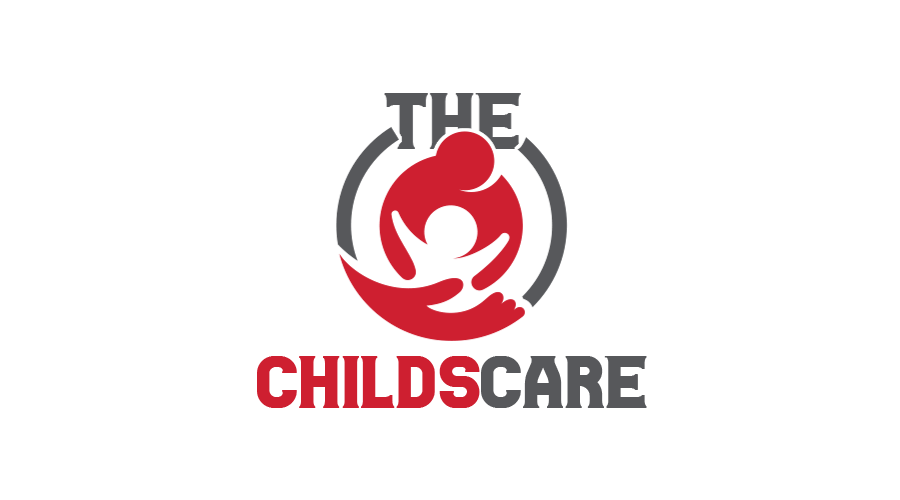I’m a primary school teacher in Orlando, and I’ve seen more social-emotional learning tools than I can count. Most look shiny on paper, but when a child melts down? They just don’t hold up.
So, when I heard about the Trailies Big Feelings Deck, I felt skeptical. But I was curious, too, because it claimed to actually work with how kids’ brains function in the middle of big feelings.
This deck stands out because it gets that when a child melts down, their logical brain “goes offline.” Traditional discipline and reasoning just aren’t going to cut it in those moments.
After using it with my 4-year-old, Caleb, and in my classroom, I have to say—it delivers. The deck’s focus on co-regulation, where my calm helps Caleb calm down, shows a real understanding of kids’ brains that most products totally miss.
What really sets this deck apart is how each card works. Every card gives the child a playful sensory activity, plus a simple script for the adult.
This isn’t just another stack of breathing exercises or a glorified timeout chart. It’s a system, and it actually fits what we know about how kids process emotions.
The Challenge: Finding SEL Tools Grounded In Real Science
As both a teacher and a mom to my 4-year-old, Caleb, I’ve tried so many emotional learning tools. Most just don’t line up with real science.
Honestly, lots of SEL programs are difficult to use and don’t always help kids the way we hope. I needed something different for my classroom and at home.
What I wanted:
- Tools based in real child development research
- Strategies that actually work during meltdowns
- Methods designed by real experts (not just marketers!)
Here’s the thing: when Caleb melts down, his logical brain just goes offline. He can’t process lectures or long explanations.
This is where co-regulation matters so much. My calm helps him calm down. It’s not about talking him through it—it’s about helping his body settle first.
The science-backed exercises I like best mix playful sensory actions with simple adult scripts. It’s actually what developmental psychology recommends.
Key elements that really work:
- Sensory-based activities that get kids moving
- Simple prompts for when parents feel overwhelmed
- Content made by child psychologists, not just someone guessing
Having therapist-designed tools made a huge difference for us. These aren’t just feel-good activities—they’re rooted in how kids’ brains grow and handle emotions.
Research shows that mixing SEL with practical application gives kids real skills they can actually use.
The Big Feelings Deck: An Overview And First Impressions
Here in Orlando, I see kids wrestle with big feelings every day. When I first heard about the Big Feelings Deck, I was both curious and honestly, a bit doubtful.
The deck has 108 cards—54 for kids, 54 for parents. It covers six big emotions: anger, sadness, worry, frustration, overwhelm, and happiness.
What makes it different?
- One side has a fun action for the child
- The other side gives parents a simple script
- Each card targets a specific emotion
- Activities focus on body-based regulation
Scientifically, this approach just makes sense. When a child is melting down, their logical brain is offline. Reasoning and lectures? Not gonna work.
The deck uses co-regulation. When I stay calm, it helps Caleb calm down faster. This matches what developmental psychology tells us.
I love that it’s therapist-designed and not just another parenting fad. The card structure is so smart—it gives kids something to do and gives me the words I need, even when my brain is fried.
It’s portable, too. I use it at home, at school, honestly anywhere. No long explanations or fancy theories—just tools that work in the moment.
Deconstructing The Cards: Playful Action + Parent Script

When Caleb, my 4-year-old, melts down, his logical brain is just… gone. That’s not just me being dramatic—it’s real neuroscience.
Big emotions mean the amygdala takes over, and rational thinking goes out the window. Lectures? Totally useless at that point.
The Big Feelings Deck’s approach takes this head-on. Each card has two main parts:
For Kids:
- Sensory actions like “breathe like a dragon”
- Physical movements to get their bodies involved
- Fun activities that feel like play, not therapy
For Parents:
- Simple scripts so I know what to say
- Calm language that helps me model regulation
- Clear directions—no overthinking required
This setup nails co-regulation. My calm rubs off on Caleb, and we get through tough moments together.
The 54 kids’ prompts and 54 parent prompts cover six emotion categories:
| Emotion | Example Action |
| Anger | Stomp like dinosaurs |
| Worry | Blow imaginary bubbles |
| Overwhelm | Squeeze and release muscles |
This expert-designed tool works so well because it fits what developmental psychology recommends. Kids need movement and sensory input to regulate themselves.
The parent script keeps me from saying something unhelpful when I’m stressed, too. Instead of barking “calm down,” I just follow the card.
This isn’t just about distraction—it’s about teaching real emotional skills, through play.
Analyzing The 6 Emotion Categories
The Big Feelings Deck covers six emotions I see every single day: anger, sadness, worry, frustration, overwhelm, and happiness.
What I love about this therapist-designed tool is how it puts developmental psychology into action. When Caleb melts down, his logical brain is out to lunch. Lecturing? Pointless.
The deck’s setup is so clever. Each card gives Caleb a playful sensory action, and gives me a script I can actually use. This is co-regulation at work—my calm helps him find his.
| Emotion | Why It Matters |
| Anger | Most common trigger for meltdowns |
| Worry | Often shows up as behavior problems |
| Overwhelm | Happens when too many feelings hit at once |
| Frustration | Daily occurrence for young kids |
| Sadness | Needs validation, not fixing |
| Happiness | Teaching kids to recognize positive emotions too |
The science is clear: during big emotions, kids need movement and sensory input. Words alone won’t do it. The deck gives us exactly that.
Each emotion category meets a different need. The worry cards help with anxiety that can look like misbehavior. The overwhelm section helps kids spot when they’re totally flooded.
The emotion-specific exercises really line up with what child psychologists say works. Emotional growth comes from action, not just talk.
The Core Principle: Why “Just Calm Down” Fails

If I’ve learned anything as a teacher and a mom, it’s that telling someone to calm down never works. There’s real science behind why this always falls flat.
The Amygdala Hijack
When kids have big feelings, the amygdala takes over. It’s like a little smoke alarm in the brain, setting off fight-or-flight mode.
In a meltdown, logical thinking just shuts down. The rational brain? Nowhere to be found.
Why Logic Doesn’t Work
You can’t logic someone out of their feelings. When Caleb is upset, his ancient brain is running the show—not his thinking brain.
Trying to lecture a dysregulated child is like speaking another language. They simply can’t hear it.
The Trailies Solution: Co-Regulation
This deck just gets it. Instead of demanding calm, it teaches co-regulation—my calm helps Caleb calm down.
Each card gives:
- Sensory action for the child (gets their body involved)
- Simple script for me (keeps me regulated, too)
The Science Behind the Structure
First, you have to calm the amygdala through feelings and body—not logic. The deck’s playful, physical activities do just that.
With 54 prompts for emotions like anger, sadness, worry, frustration, overwhelm, and happiness, it’s honestly developmental psychology in action.
The Brain “Going Offline” During A Meltdown
When my 4-year-old Caleb has a meltdown, I used to think I could reason with him.
I’d try explaining why he needed to calm down or why his reaction seemed a little too big for the situation.
That approach never worked. Now I get why.
During a meltdown, a child’s logical brain literally shuts down.
Scientists have found that when we’re overwhelmed, rational thinking just isn’t possible. Cambridge researchers discovered that the brain “going offline” happens in extreme states.
The Trailies Big Feelings Deck totally gets this. The creators know lectures won’t work when kids are drowning in emotion.
The deck focuses on co-regulation instead.
This means my calm becomes Caleb’s calm. When his brain checks out, mine needs to stay online for both of us.
Each card pairs a sensory action for the child with a simple script for me as the parent.
This isn’t just random; it’s rooted in solid developmental psychology.
| What Doesn’t Work | What Does Work |
| Explaining logic during meltdowns | Staying calm and co-regulating |
| Long talks about feelings | Simple, clear scripts |
| Expecting rational responses | Using sensory activities |
Child psychologists helped design this deck, which gives me a lot more confidence. When kids are overwhelmed, we need to help their nervous systems settle first. Then we can talk about feelings.
The Power Of Co-Regulation In Practice
When Caleb melts down, I used to think reasoning would help. As both a teacher and a mom, I’ve realized that during those big feelings, a child’s logical brain just goes offline.
This is where the Big Feelings Deck really shines. The cards focus on co-regulation—my calm becomes Caleb’s calm. It’s not about fixing his feelings, but about being with your child during challenging moments.
The science here is solid:
- During meltdowns, the emotional brain takes over.
- Lectures and reasoning don’t work.
- Kids need adult nervous systems to help regulate their own.
What I love about this deck is how it brings developmental psychology to real life. Each card gives a playful sensory action for the child and a simple script for me.
The Co-Regulation Loop™ process skips logic and goes straight to the body. When Caleb’s overwhelmed, we might do dragon breathing together or blow imaginary bubbles.
As a therapist-designed tool, the deck makes me feel like I’m using evidence-based techniques. The structure is honestly brilliant—it gives both of us something real to do when emotions run high.
Instead of feeling helpless during his big feelings, I now have 54 expert-backed strategies that actually fit how a child’s brain works.
Applications For Classroom And Home Use

As a primary school teacher in Orlando, I’ve seen firsthand how the Big Feelings Deck helps kids ages 4-10 regulate emotions in real classroom situations.
The beauty of this therapist-designed tool is how it gets basic brain science.
When kids have meltdowns, their logical brain just goes offline. Traditional lectures or reasoning don’t work. The deck totally gets that.
Home Applications:
- Morning routine meltdowns
- Bedtime resistance
- Sibling conflicts
- Homework frustration
Classroom Applications:
- Transition difficulties
- Peer disagreements
- Test anxiety
- Overwhelming moments
The science-backed exercises focus on co-regulation. My calm becomes my student’s calm. When I stay regulated, kids start to settle too.
Each card pairs a playful sensory action for the child with a simple script for me. It’s developmental psychology in action. The child gets immediate sensory input while I offer calm guidance.
With Caleb at home, I’ve watched him go from screaming to saying, “Mom, I need a Brave Step.” That’s the kind of shift that happens when you give kids real tools instead of just concepts.
The 100+ emotion-coaching prompts cover six key emotion categories: anger, sadness, worry, frustration, overwhelm, and happiness. Having specific strategies for each emotion makes all the difference, whether at home or in the classroom.
Final Assessment: A Highly Recommended Tool
I’ve spent years watching kids wrestle with big emotions, and honestly, the Big Feelings Deck stands out. When my 4-year-old Caleb melts down, his logical brain just… checks out.
The Science Behind It:
- During tantrums, kids’ emotional brains totally take charge.
- Lectures or reasoning? Forget it—they won’t land.
- Kids really need physical, sensory stuff to reset.
The deck’s focus on co-regulation feels spot on. My calm rubs off on Caleb, and that’s not just wishful thinking—it’s actually how their nervous systems grow.
What Makes It Work:
| For Kids | For Parents |
| 54 playful sensory actions | 54 simple scripts to follow |
| Fun activities they actually want to try | Clear guidance for those stressful moments |
| Physical movement to help them reset | No more guessing what to say |
The card setup just works. One side gives Caleb a simple, concrete thing to do. The other side tells me exactly what to say, which is a lifesaver when my brain’s fried.
Knowing it’s therapist-designed makes me trust it even more. The six emotion categories really cover the whole range, from anger to just feeling totally overwhelmed.
I toss these cards in my bag and use them everywhere—home, the classroom, even Target when things go sideways. They’re actually practical for real parenting, not just theory.

